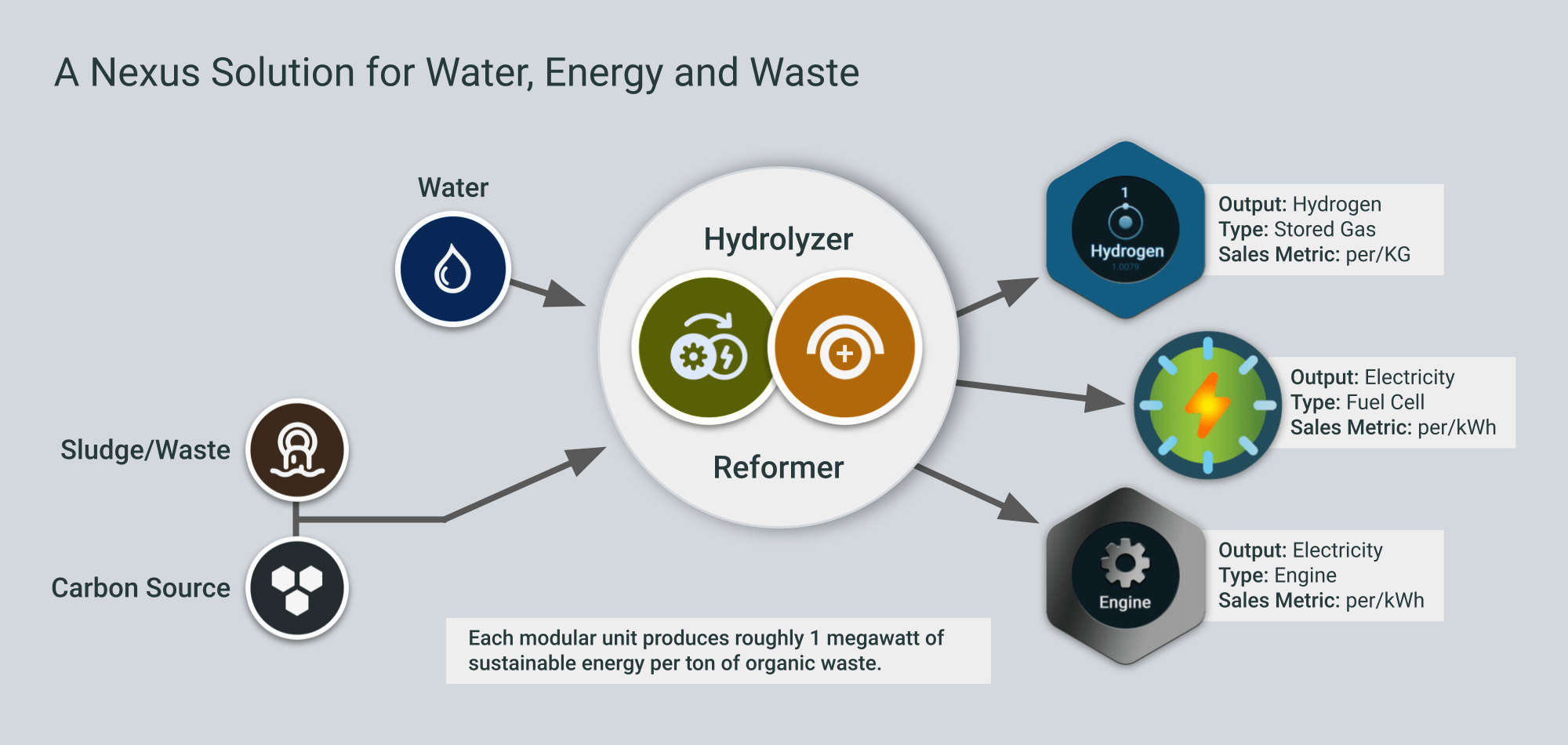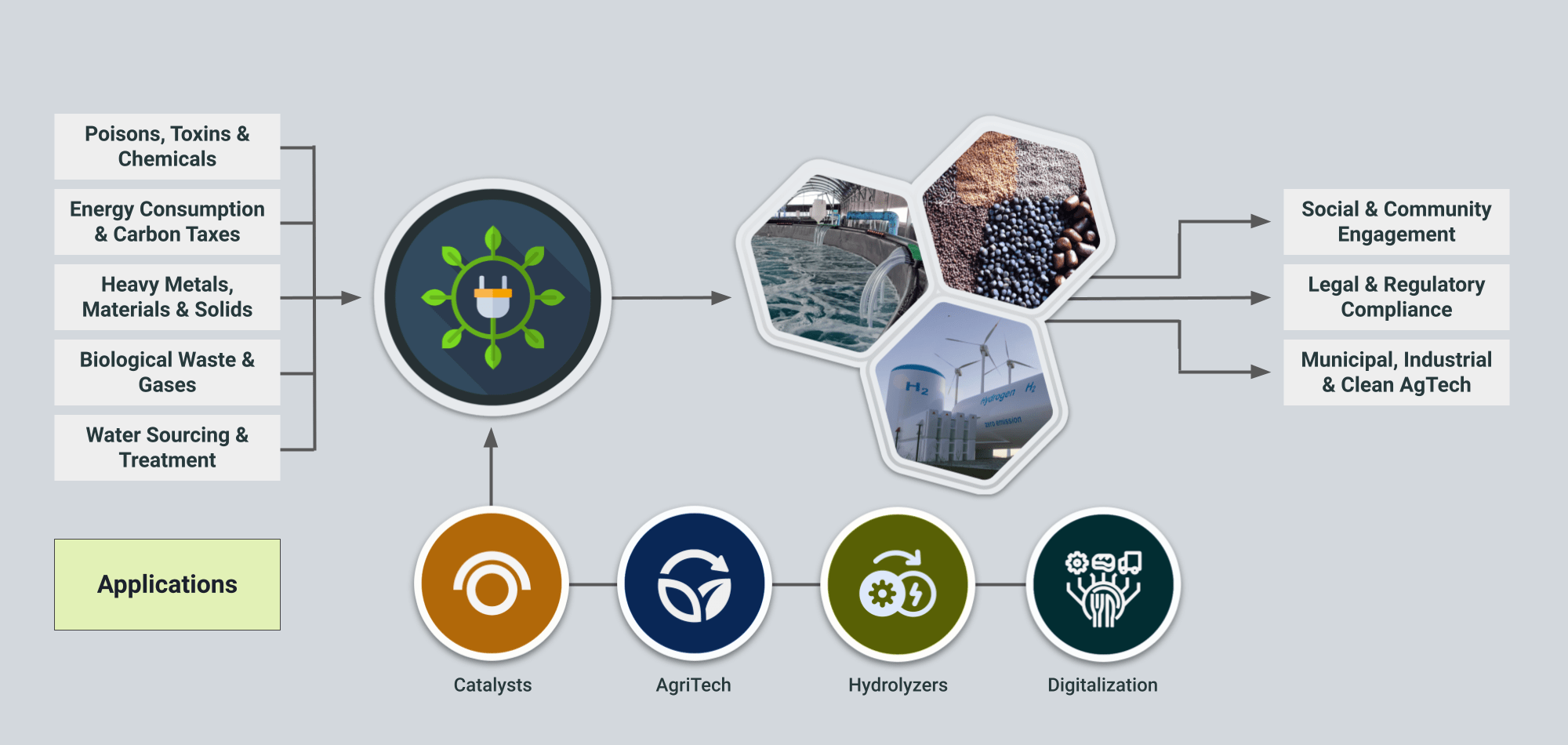Our Generational Challenge
Securing a Sustainable Energy Future for Everyone
Today's water and waste management facilities can't keep up with constant fluctuations in municipal funding, environmental policy reform, escalating energy costs and residential encroachment. These considerations are being amplified by ageing infrastructure and regulatory pressures to improve performance. Taxpayers and rate-payers are facing the dual threat of rising cost environmental risk and public underfunding, so they now expect facility operators to perform more with fewer resources.
For small to mid-range municipalities and commercial enterprises, the shifting to decentralized technologies accelerate the transition to a sustainable future for the broader communities they serve.
Our energy independence future is modular
Energy independence from fossil fuels that also can adapt to weather conditions, construction types and "green building" regulations for carbon-neutrality are challenging existing economic models for innovation and investment. Factor in the geophysical constraints on the reliability of solar and wind power worldwide, and the prospects for local business and residential expansion create a disruptive element that may take years to resolve.
The global value of the waste-to-energy market reached USD$35.1 billion in 2019. By 2027, forecasts expect the sector to be valued at USD$50.1 billion, growing at a CAGR of 4.6% from 2020 to 2027.
Deploying clean energy systems at the pace required by regulatory agencies demands a lot more than expansion in manufacturing capacity. Grounded by secure and stable supply chains for components and materials, four technologies dominate this space — solar photovoltaics (PV), wind, batteries and heat pumps — yet electrolyzers and fuel cells are becoming more crucial to the energy transition due to their scalability and decreasing acquisition cost.
A New Financial and Regulatory Landscape
Delivering on the promise of renewable energy projects that are compliant with emissions targets and viable business models is proving to be a challenge for projects with limited scope or real estate. For most buildings that require climate-controlled areas, traditional systems are no longer sustainable as they cannot survive without subsidies or elevated price points from local utility companies.
According to the IEA, only 25% of the formally-announced manufacturing projects for solar power are under construction or beginning construction imminently. The global implementation rate is around 35% for EV batteries and less than 10% for electrolysers — and they share these delay impacts.

Expanding Energy Capture Alternatives
The decarbonization of today's energy system rests on eight main pillars: behavioral change and offset demand, energy efficiencies, hydrogen integration, bioenergy, wind and solar, carbon sequestration (CCUS) and sourcing shifts to natural gas, nuclear, hydropower, geothermal and improvements in solar, wind and marine-based capture. Behavioral change and energy efficiency gains do not require changes to existing platforms, but the others do — and that accounts for over 70% of total emissions reductions over 2021-2050. That shift requires huge investment in new equipment and infrastructure, but without modular alternatives this transition is daunting for small business and detached communities.
In 2022, the total investment in renewable energy amounted to approximately USD$495 billion worldwide. This was a 17% increase from the previous year.
— Statista, 2023
Materials and Approvals
The raw mass of resources entering the energy system by 2050 is forecasted to be about half today consumption. Biomass will account for about 45% of the mass inputs in 2050, materials needed to build and sustain these clean energy assets at roughly 35%, and fossil fuels is the balance with about half consumed in facilities equipped with carbon capture, utilisation and storage and around 20% is used for feedstock.
Given the long lead times involved, especially in developing infrastructure in dense or landlocked urban zones, early planning is not only needed but expect long-term certification and approvals for construction. Production and delivery of both critical and bulk materials is very energy- and carbon-intensive today. Supply chains must also be considered throughout this scenario because compatibility with global net zero trajectories are rapdily emerging as well.
Targeted WTE Resources
- Commercial, institutional or residential food wastes, particularly those currently disposed of in landfills
- Biosolids, organic-rich aqueous streams, sludges from municipal wastewater-treatment processes
- Manure slurries from livestock operations
- Organic wastes from industrial operations, including but not limited to food and beverage manufacturing, biodiesel production, and integrated biorefineries, as well as other industries such as pulp and paper, forest products, and pharmaceuticals
- Biogas derived from any of the above feedstock streams, including but not limited to landfill gas
Subscribe and get more insights today!
Never miss an update, receive notifications of emerging trends and analysis.






